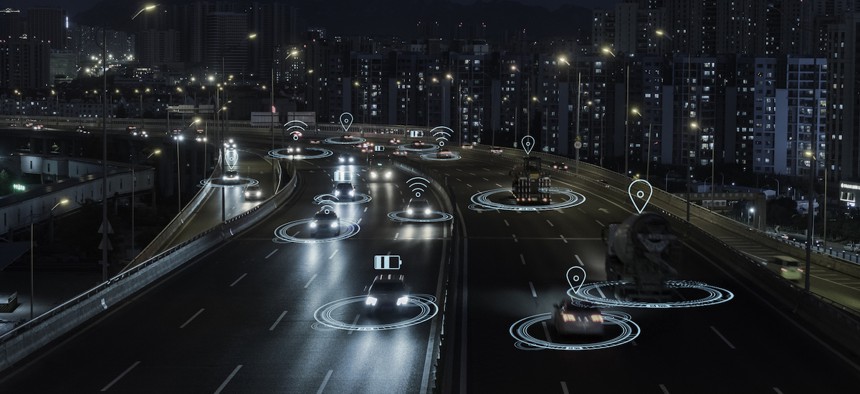‘Event-based’ data could enhance traffic management efforts and road safety

lupengyu via Getty Images
Arizona State University researchers have developed an innovative traffic monitoring system that looks to improve traffic safety, particularly as self-driving cars become more popular.
Autonomous vehicles are becoming less of a sci-fi idea and more of a reality as cities across the U.S. continue testing how self-driving vehicles fare on their streets.
In Austin, Texas, for instance, a new fleet of self-driving cars has hit the streets after Tesla launched its Robotaxi service in the city earlier this week. Since then, safety concerns have already been raised as the autonomous vehicles have been reported to enter a wrong lane, try to leave passengers on the side of a road or intersections or brake suddenly.
More advanced traffic systems could help address such concerns and risks in communities, said Yezhou Yang, associate professor for Arizona State University’s School of Computing and Augmented Intelligence.
He pointed to a fatal accident in Tempe, Arizona, in which a pedestrian was struck and killed by a self-driving vehicle in 2018. The car was part of a testing phase, which was suspended shortly after the incident, from the rideshare company Uber. The company also ended its tests in other cities like Phoenix, Arizona; Pittsburgh, Pennsylvania; San Francisco, California; and Toronto, Canada at the time.
The crash spurred local officials and Arizona State University to explore ways to leverage existing cameras on public roads and computer-vision technologies to improve traffic monitoring and safety efforts through data, Yang said.
Researchers at the university have developed a traffic monitoring system called eTraM that leverages sensors collecting event-based data for enhanced traffic insights. The system can detect traffic events like near misses, lighting conditions and weather without the use of images to ensure people’s privacy, he explained.
Yang said there are three testing sites where the eTraM system has been deployed on public roads in Phoenix. The ASU team is also developing machine learning models that can leverage those data for vehicle reconstruction, tracking and trajectory and other projections.
Ultimately, the systems’ insights could help create a digital environment where AVs and public infrastructure can exchange traffic-related information to ensure vehicles are navigating through cities safely, Yang said. That could also help build public trust in the deployment of AVs in their communities.
For transportation planners, event-based tech and data can also “give you some better insights to overall safety and help you look at what might need to be changed,” said Laura Chace, president and CEO of the Intelligent Transportation Society of America.
Such systems, for instance, can help transportation authorities identify and respond to vehicle incidents more quickly or inform physical and digital infrastructure decisions, such as changing traffic light speeds, to improve traffic flow more proactively, Chace said. Agencies then could better target investments for traffic safety efforts, potentially reducing the risk of accidents and their associated costs.
Chace said event-driven data systems are “becoming more commonplace” as leaders realize that traffic-monitoring devices and the data they generate “are as essential to invest in as the physical roads and bridges.”






